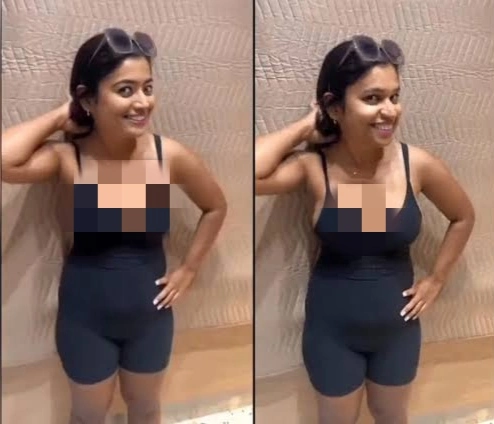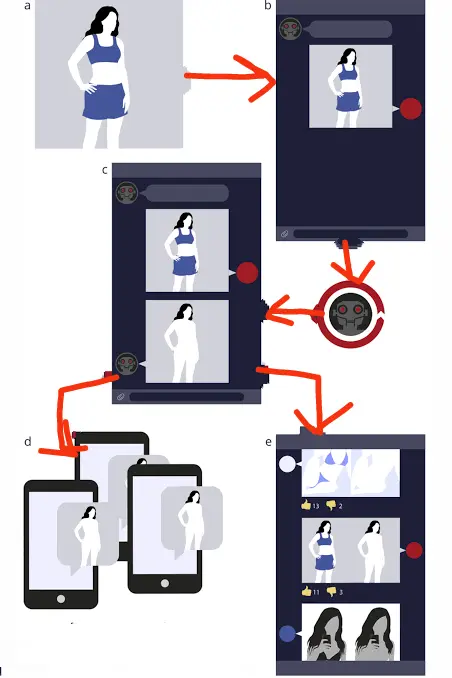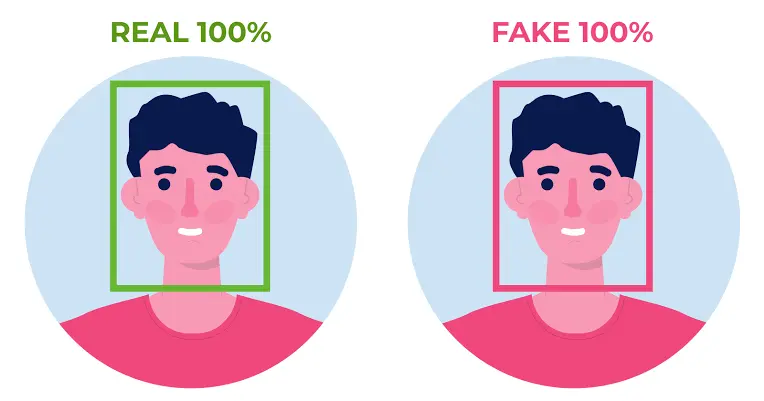What is Deepfake Bots?
Deepfake bots are computer programs that use advanced artificial intelligence techniques to create highly realistic but completely fabricated videos or images. These bots analyze existing footage of a person, and then generate new content that makes it appear as though that person is saying or doing things they never actually did. This technology can be used to manipulate and spread misinformation, as well as create convincing yet fake content that can be difficult to distinguish from reality. It’s important to be cautious and critical of online content to avoid falling for deepfake creations.
How Deepfake Bots work : explained
Deepfake bots work by using a type of artificial intelligence called “deep learning.” Here’s how the process generally works:
1. Data Collection
The bot needs a significant amount of data to learn from. This includes videos and images of the person whose likeness will be used in the deepfake. The more data available, the more accurate the deepfake can become.
2. Face Recognition and Mapping
The bot first identifies and maps the person’s face from the collected data. It learns the facial features, expressions, and movements specific to that person.
Read Also : Top 50 Science Website
3. Feature Extraction
Deep learning algorithms break down the facial features into smaller components. It might analyze how the mouth moves when speaking, how the eyes blink, and other nuances in facial expressions.
4. Neural Network Training
The bot uses a neural network, a complex mathematical model, to process the data and learn the patterns that make up the person’s face. It learns how different facial features correlate with different expressions and movements.
5. Generating Fake Content
Once the bot has learned these patterns, it can take an existing video or image and manipulate it. For instance, it can make the person in the video appear to say something they never actually said by altering their mouth movements, expressions, and voice.
6. Fine-Tuning
To make the deepfake more convincing, the bot might fine-tune its output by comparing it to the original data. It adjusts the generated content to match the original person’s mannerisms as closely as possible.
7. Rendering the Deepfake
The bot combines the manipulated facial movements with the original video or image, creating a new video that looks very realistic.
8. Refinement
Some advanced deepfake bots use iterative processes to refine their results. They might generate multiple versions and select the one that looks the most convincing.
Read Also : Encryption in Computer Network
The result is a video or image that appears genuine but is entirely fabricated. Deepfake bots can be used to create fake speeches, alter historical footage, and more. It’s worth noting that while deepfake technology has some beneficial applications, like special effects in movies, it also raises significant ethical and security concerns.
How to Use Deepfake bot ?
Steps :
1. Collect Data
2. Choose Software
3. Train the Bot
4. Edit the Content10
5. Review and Adjust
6. Create the Deepfake
Is Deepfake Bots Legal in India ?
In India, there are no specific rules about using deepfake bots. However, existing laws like Sections 67 and 67A of the IT Act can apply to things like spreading false info or explicit content.
Still India and all other countries need strong and strict rules about Deepfake bots.
Deepfake vs Cheap Fake
In the world of digital era, it is important to understand the distinction between deepfakes and cheap fakes. Deepfakes are the sophisticated masters of disguise. They use smart computer tricks to create videos that make someone appear to say or do things they never did. These are tricky because they can look really real!
On the other hand, we have cheap fakes. These are like quick doodles compared to a masterpiece painting. Cheap fakes don’t use fancy AI or tech skills. They just involve simple edits, like cutting and pasting someone’s face onto another person in a video. These are easier to spot since they might not look as convincing.
Read Also : Forensic Anthropology
The key difference? Deepfakes need smart machines and lots of data to learn from, while cheap fakes are simpler and less convincing. Both can be used for fooling people, but deepfakes are like the superheroes of trickery while cheap fakes are like the rookies.
So, next time you see something that looks too good (or too bad) to be true, give it a second look. It might be a deepfake or just a plain old cheap fake trying to play tricks on your eyes!
You May Also read : Dark Web And Dark Webseries
Few Deepfake Websites
1. Face Swap Live.
2.DeepFakes Web.
3. Wombo.
4. Deep Face lab.
5. Zao.
6. Reface.
7. Jiggy.
8. Deep Art.
As these websites are illegal and may cause harm to different people, I will suggest to avoid them.
How to Differentiate Between the Deepfake Photo and The Original Photos ?
Recognizing a deepfake photo from an original one can be challenging, but there are some clues you can look for:
1. Unnatural Facial Movements
Deepfakes might show unnatural facial movements, like weird blinking or odd lip sync. Pay close attention to these details.
2. Inconsistent Lighting and Shadows
Deepfakes might have inconsistencies in lighting and shadows on the face that don’t match the background.
3. Blurry Edges or Artifacts
Look for blurry edges around the face, strange colors, or pixelated areas that don’t fit well with the rest of the image.
4. Unusual Eye Reflections
Sometimes, the reflection in the eyes of a deepfake might not match the scene or the lighting.
5. Lack of Emotions
If the person in the photo doesn’t show emotions in their eyes or face like you’d expect, it could be a sign of a deepfake.
Read Also : 5G effects on environment
6. Unnatural Skin Textures
Deepfakes might struggle with realistic skin textures, so watch out for overly smooth or waxy-looking skin.
7. Context and Source
Consider where you found the image. If it’s from an unverified source or a social media account with limited activity, be cautious.
8. Compare to Trusted Images
If you have access to other images of the same person, compare facial features and expressions to see if they match up.
9. Use Technology
Some tools or software can help identify possible deepfakes by analyzing the image for inconsistencies.
Remember, while these clues can help, there’s no foolproof method to spot all deepfakes. Stay vigilant, especially with content that seems too sensational or unbelievable, and try to verify from reliable sources whenever possible.
How to Remove Your Photo from internet, If You are a Victim of Deepfake Bots?
If you’re a victim of a deepfake and want to remove your photo from the internet, here’s what you can do:
1. Contact Website Administrators
Reach out to the administrators of websites or social media platforms where the deepfake image is posted. Request them to take down the content due to its malicious nature.
2. Submit Takedown Requests
Many platforms have a process for reporting and requesting the removal of content that violates their terms of use. Look for the option to report inappropriate or false content and submit a takedown request.
Read Also : Need of Semiconductor Technology in India
3. Legal Action
If the deepfake content is causing significant harm or distress, you might consider consulting a legal professional. They can guide you on potential legal avenues to have the content removed or seek damages.
4. Document Evidence
Keep records of where you found the deepfake content, including URLs, dates, and screenshots. This documentation can be useful if you need to escalate the issue.
5. Reputation Management Services
Consider using online reputation management services that specialize in removing or suppressing harmful content from search engine results and online platforms.
6. Privacy Settings
Ensure your privacy settings are strong on social media platforms to prevent unauthorized use of your photos in the future.
7. Report to Authorities
If the deepfake content is explicit, defamatory, or threatening, you might want to report it to law enforcement authorities.
Recent Incident
- A fake video of actor Rashmika Mandanna circulated on X (formerly Twitter) on Nov 6, 2023.
- The video showed Mandanna’s face on someone else’s body.
This caused outrage, with actor Amitabh Bachchan calling for legal action. - Mandanna emphasized the urgency in addressing deepfakes to prevent identity theft.
- The incident led to the minister highlighting deepfakes as a harmful form of misinformation that platforms should handle.
Govt. Action
The Indian government has given a warning to major social media platforms. They must remove any fake videos reported by users within 36 hours. If they don’t, they could face legal action. The government wants the platforms to work hard to find and remove false information and fake videos that break the rules. They need to act quickly, following the guidelines set in the IT Rules of 2021. This is to make sure that users don’t share this kind of content, and if they do, it’s taken down promptly.
– Intermediaries were warned that not following IT Act and Rules could lead to losing legal protection.
– Section 79 of the Information Technology Act, 2000 shields intermediaries from liability for third-party content.
- Minister Rajeev Chandrasekhar urged victims of deepfakes to file police complaints and seek legal remedies under the IT Act.
- The IT Act allows for penalties and jail time for those involved in creating or spreading deepfake content.
- Section 66 D of the IT Act, 2000 states that cheating through personation using computer resources can lead to up to 3 years of imprisonment and a fine of up to ₹1 lakh.
- IT Intermediary Rules, Rule 3(1)(b)(vii), instructs social media platforms to inform users not to host content impersonating others.
- Rule 3(2)(b) mandates intermediaries to remove impersonation content within 24 hours upon receiving a complaint.
- IT Rules of 2021 make it legally binding for online platforms to prevent misinformation spread and remove such content within 36 hours of reporting.
- Non-compliance can lead to legal action under Rule 7, allowing aggrieved individuals to take platforms to court under Indian Penal Code provisions. Platforms must take proactive measures to combat this threat.
Conclusion
Remember, the process of removing deepfake content from the internet can be complex and may not always guarantee complete success. Prevention is key, so be cautious about sharing personal photos and information online and regularly review your online presence. As our world is moving towards AI, the threats in the upcoming times will always increase. Once you are exposed to internet , its forever. So, stay safe…



6 thoughts on “10 Deepfake Bots Facts Explained”